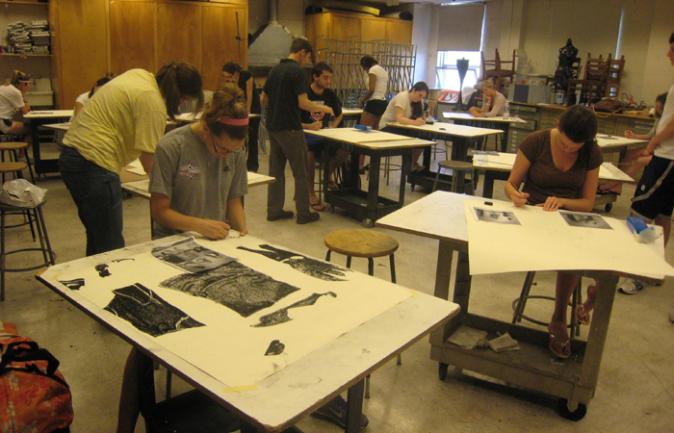Drawing
Drawing is the practice of applying marks, as line, texture and tone, to a surface or support, usually paper, using various medium such as graphite, charcoal, ink, and chalk. Pencils, brushes and other tools are used to apply the medium. Although sometimes incorporating text, Drawing is a visual language that can communicate ideas and information through images. The history of Drawing demonstrate its use as studies to investigate the personal, social, natural, scientific, spiritual, and imaginative aspects of life. In addition to the investigative nature of the sketch, drawings can become more polished works of art making sensitive statements about the subject and content depicted.
Students interesting in learning the creative and expressive practice of Drawing should enroll in an introductory Drawing course. Each semester Drawing I: A Visual Language (ARTS-110) is offered. Additional introductory Drawing courses are periodically offered. There is no prerequisite course for introductory Drawing courses. Drawing instructors in introductory classes take a perceptual approach using representational subjects such as still life, landscape, interiors and figure. They also stress mastery of methods, materials and techniques of a range of drawing medium. Students will study a selection of artists and their practices from various art traditions.
An intermediate Drawing class is offered each semester for students who plan to continue their study. The program offers Figure Drawing (ARTS-211) every year. In addition, Drawing in Color (ARTS-212) exploring the use of pastel and other colored mediums, Wet Media (ARTS-213) investigating drawing with liquid mediums using brush, pen and other tools, and Narrative and Figure Drawing (ARTS-214) focusing on narrative content are periodically offered. Drawing projects become progressively more complex and more individual in content, reflecting the expressive and conceptual intention of the practitioner.
Drawings can be representational or abstract, contain narrative content and symbolism, and communicate emotional, spiritual, political or philosophical ideas. The students will also explore various stylistic approaches.
Art majors and minors who have taken two semesters of Drawing can continue their creative practice in Directed-Study courses which require the instructor’s and Department’s approval.
Drawing courses have a lab fee that covers figure models, still life material, equipment maintenance and some classroom supplies. However, students still have to purchase some of their own art supplies. This expense is similar to the cost of books in other courses.




